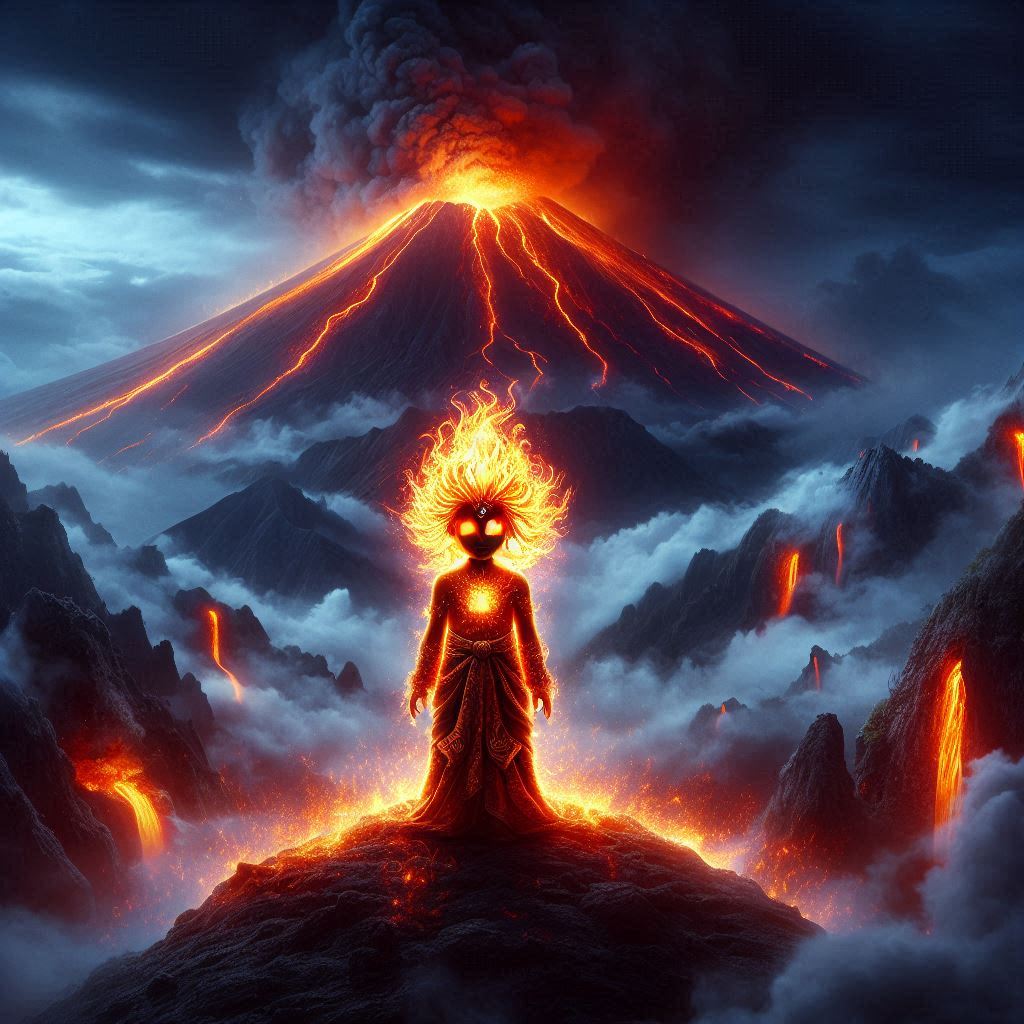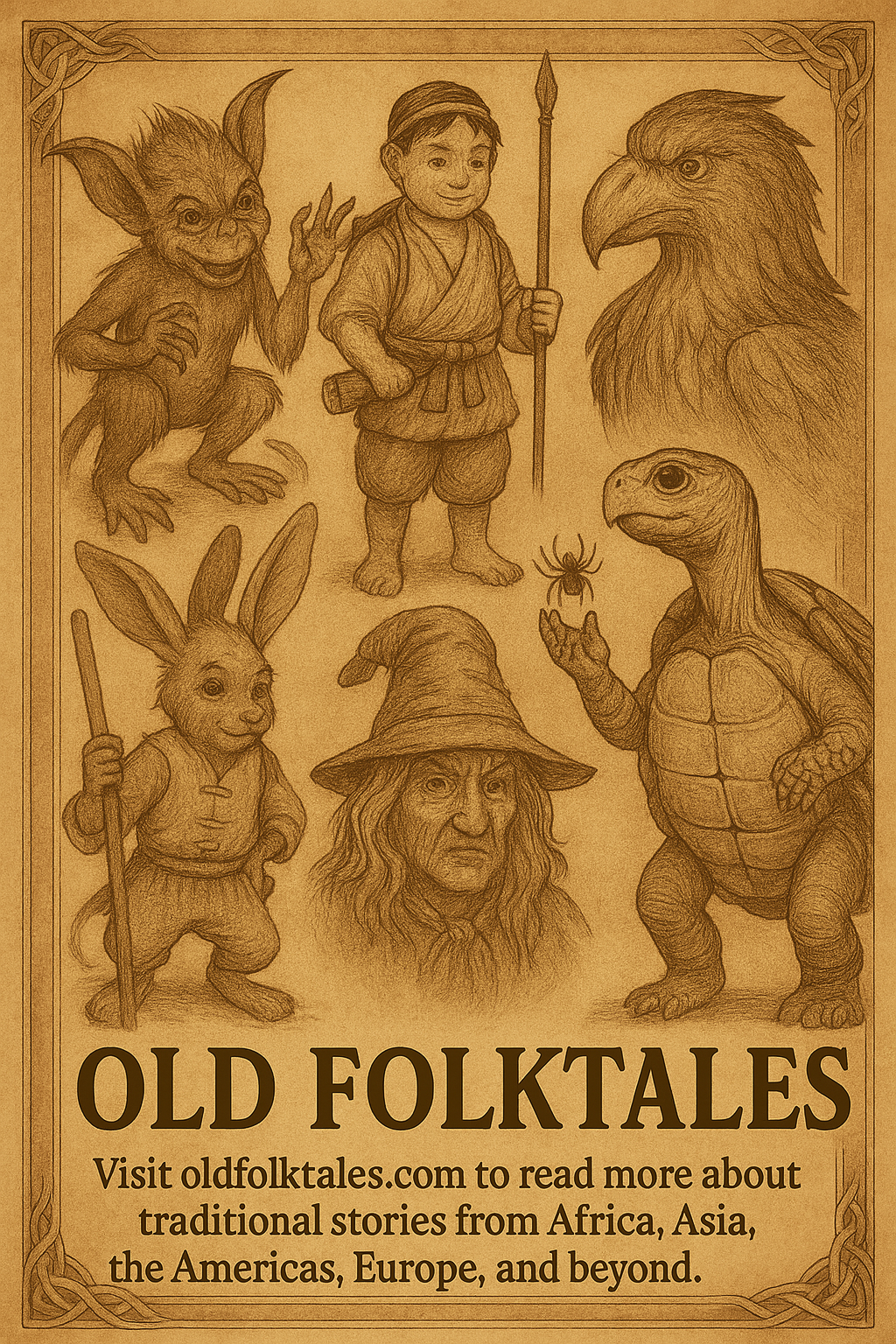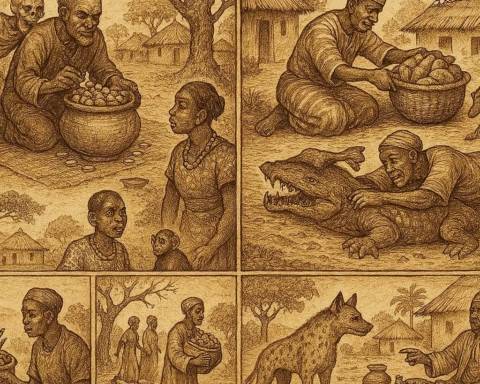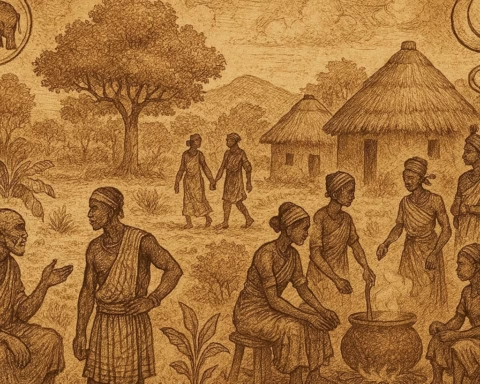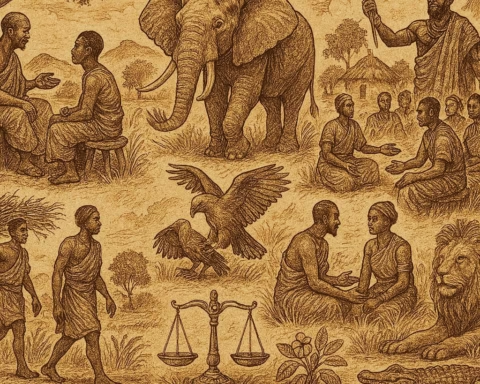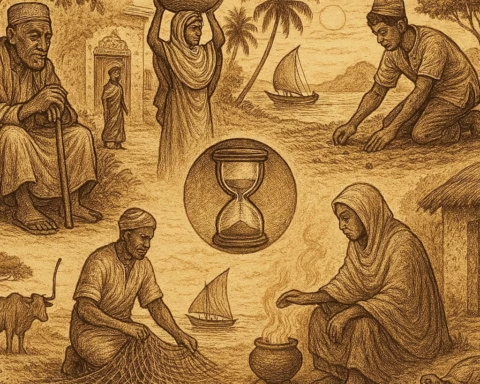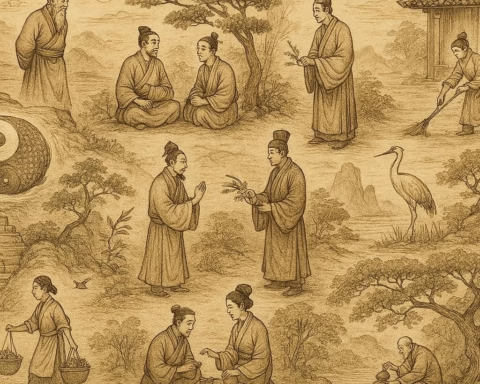The Birth of a Flame
Long ago, before the villages on Java’s fertile land rose with rice and song, Mount Merapi rumbled like a sleeping lion. The Javanese elders warned of a spirit that lived in the volcano’s heart, a guardian not made of stone, but born from it. They called it the Fire Child.
According to legend, the Fire Child appeared during a great drought. The rivers shrank. The crops turned to ash in the sun. The village of Ngadirejo, nestled closest to Merapi’s base, held an emergency gathering beneath the banyan tree. Elder Saputra, whose face was wrinkled like dried tamarind, recalled the old chant. When the earth burns and the clouds flee, the Fire Child must be awakened.
The villagers hesitated. To summon the Fire Child was to invite risk, for the spirit did not come without a price.
The Drummer’s Journey
Among the villagers was a boy named Raka, the son of a humble drum maker. His mother had died during the last eruption, and since then, his father had carved drums in silence. Raka, however, could not remain still. Each evening, he climbed higher up Merapi’s slope, listening for strange sounds, rumors of the Fire Child’s voice carried on the wind.
When the drought grew worse, and children began to faint from thirst, Raka volunteered to go up the mountain and call the spirit himself.
“You are only a child,” the village priest warned.
“But so is the Fire Child,” Raka replied.
With his father’s finest drum tied to his back, Raka began his ascent at dawn. The sun shimmered above, but the mountain remained cold. Strange tracks followed him, small ash scorched footprints that led deeper into Merapi’s crater.
The Meeting in the Crater
When Raka reached the smoking mouth of the volcano, he drummed. He did not beat wildly. Instead, he tapped out the rhythm of grief, his mother’s song, played softly in her memory.
Then, the fire cracked. A figure stepped out from the glowing lava, a child made entirely of flickering flame, with eyes like molten gold. The Fire Child listened. Raka fell silent.
“I heard your grief,” said the spirit. “Why did you come?”
“My village is dying. We need rain,” Raka said, shivering.
“I can bring the storm,” the Fire Child whispered. “But a spirit’s gift must be earned.”
Raka bowed his head. “What do you want?”
The Fire Child tilted its head. “Your voice. A drummer who cannot call the storm must give up what calls it.”
Without hesitation, Raka nodded. The Fire Child placed a burning hand on his throat. Raka’s voice vanished, but so did the clouds. Thunder roared above them. Rain poured down the mountain.
The Return and the Silence
Raka returned with a smile and no voice. He handed his drum to his father, who wept without asking why. That evening, the village rejoiced. Crops sprang from the earth like never before. Rain bathed the children’s heads, and the sky pulsed with life.
Though he never spoke again, Raka’s hands told the story. With every beat of his drum, the village remembered the Fire Child. Elders passed the tale down through generations. It became a chant, a warning, and a blessing all in one.
Raka lived a full life of silence. But whenever Merapi rumbled, the villagers knew he was listening, and the Fire Child was listening too.
Moral Lesson
The Fire Child of Mount Merapi teaches us that sacrifice, when made from love and duty, can nourish an entire community. Raka’s silent gift reminds us that courage does not always shout and that true power often comes through quiet acts of guardianship. This story echoes the Javanese belief that harmony between humans and spirits must be maintained through respect, ritual, and readiness to give.
Knowledge Check
- What is the moral of the folktale The Fire Child of Mount Merapi
The story teaches a lesson about sacrifice and duty, showing how one boy’s selfless act brought life back to his community. - What cultural group does the tale The Fire Child of Mount Merapi come from
This folktale originates from the Javanese people of Indonesia. - Why did Raka climb Mount Merapi to summon the Fire Child
In the story, Raka climbed the mountain out of desperation and love for his village, seeking to end a deadly drought. - How does the folktale The Fire Child of Mount Merapi explain volcanic spirits
The story offers a traditional explanation for Merapi’s rumblings, portraying them as signs of a guardian spirit’s presence and power. - Is The Fire Child of Mount Merapi a ghost story, origin tale, trickster story, or spirit tale
The Fire Child of Mount Merapi is a spirit tale, reflecting the Javanese belief in powerful nature guardians that require respect and ritual. - Why is the tale The Fire Child of Mount Merapi still meaningful to modern readers
The story continues to resonate because it shows how sacrifice, harmony with nature, and quiet strength can protect and uplift a community.
Cultural Origin: This folktale comes from the traditional beliefs and storytelling practices of the Javanese people of Indonesia.
